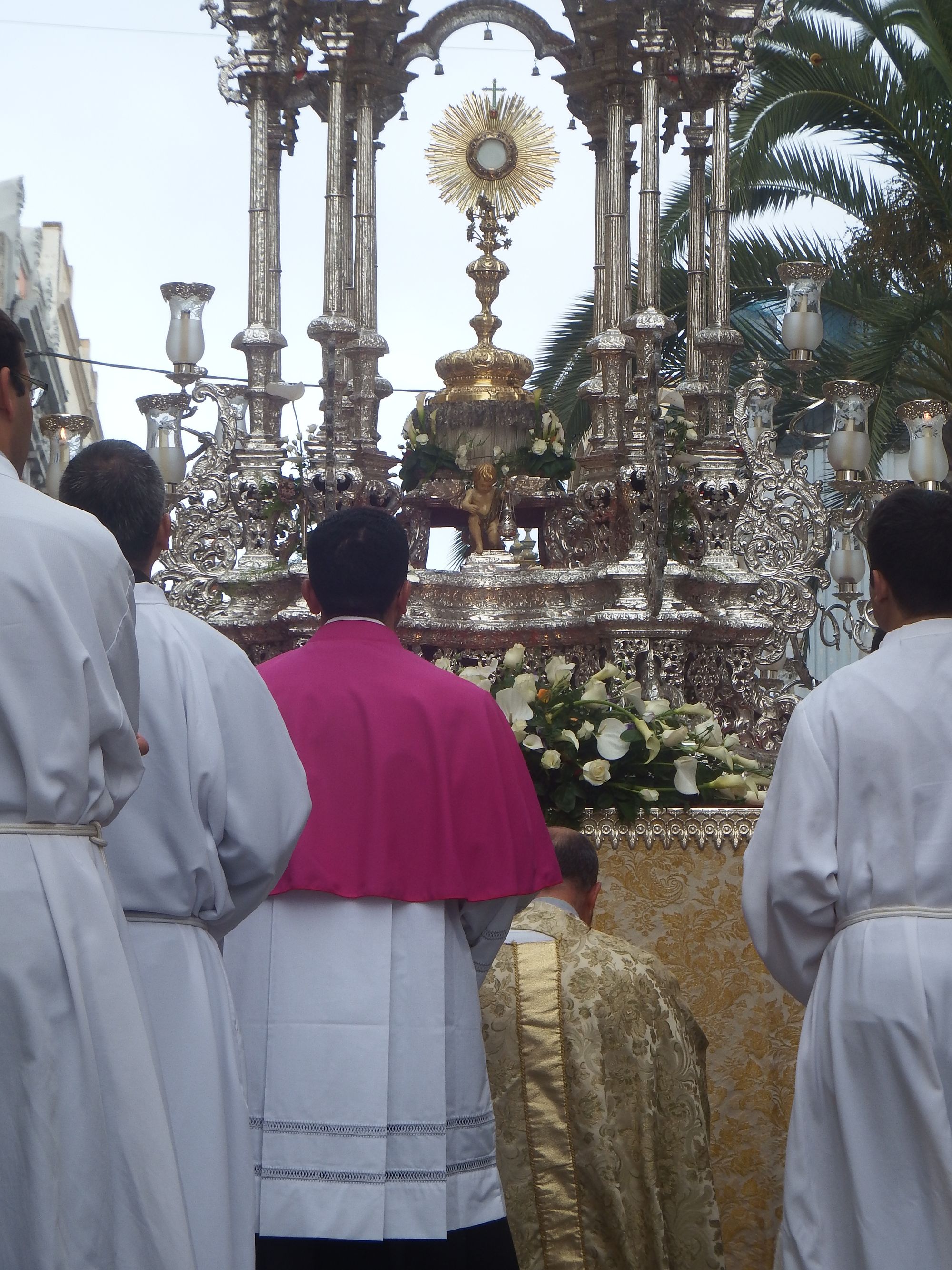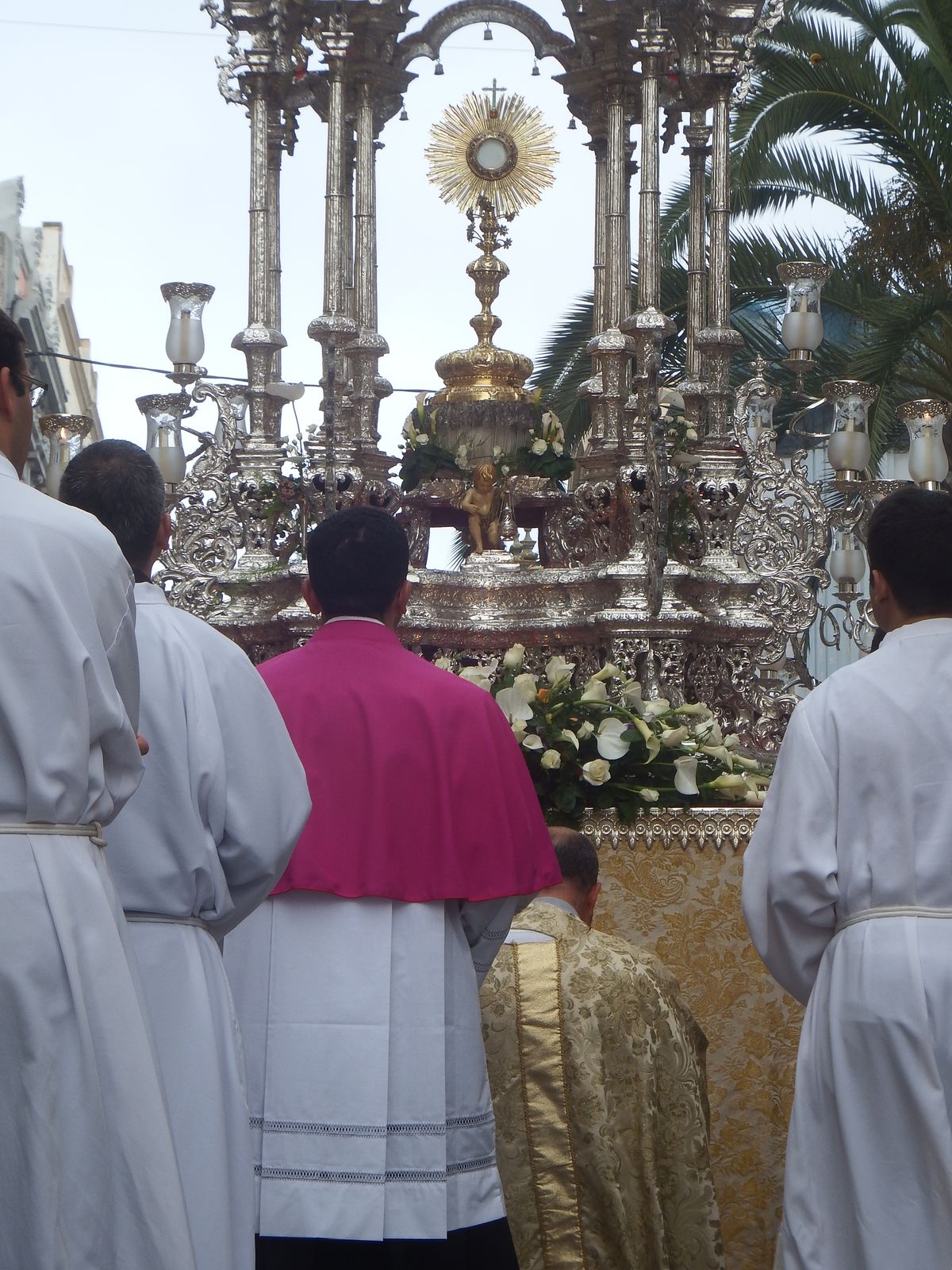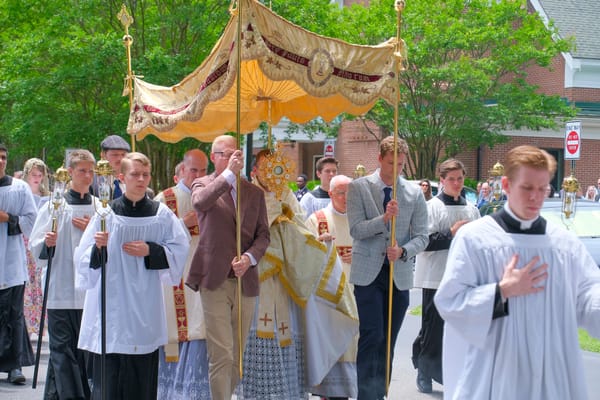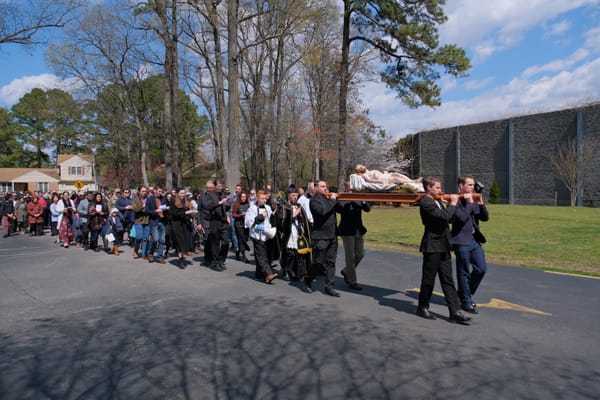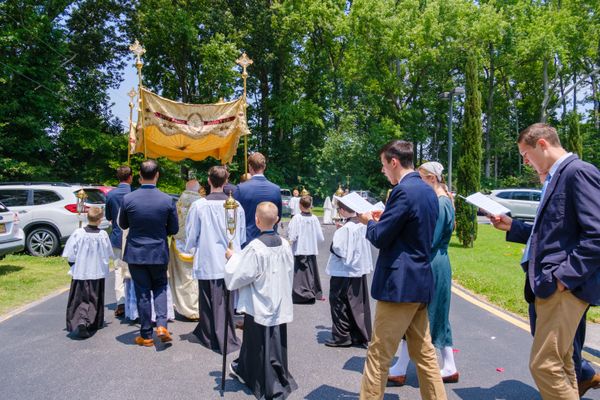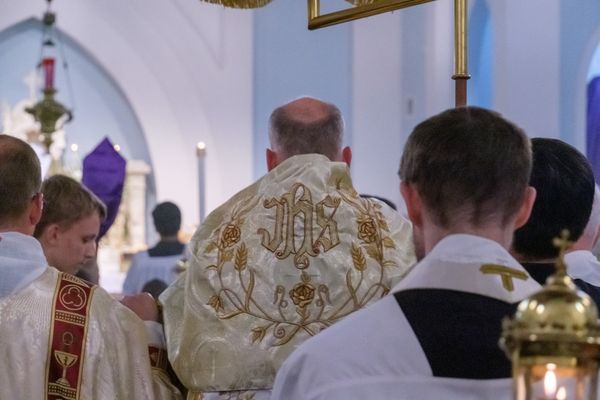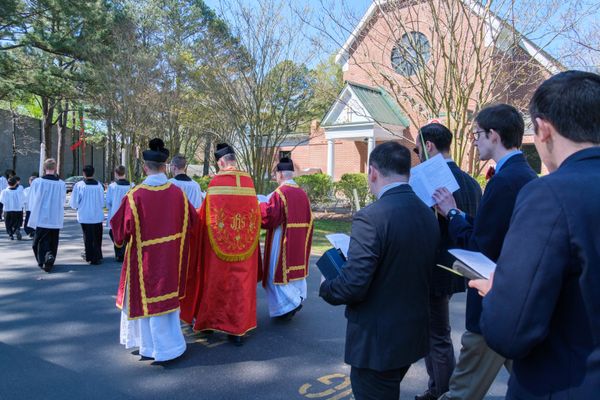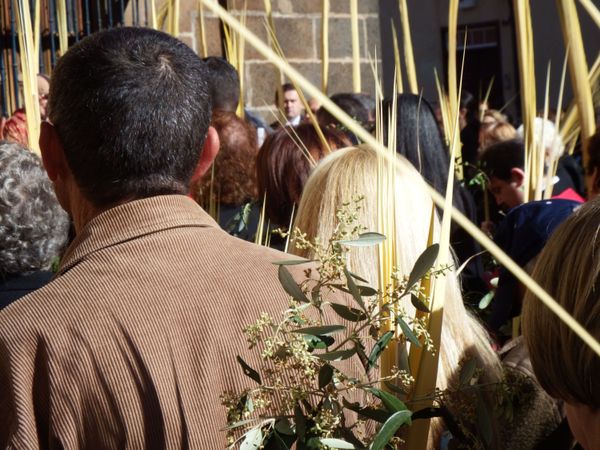Details:
Public processions with the Blessed Sacrament became popular only when Jesus’ real presence in the Eucharist was questioned. For many centuries this sacramental reality was taken for granted, but in the 16th century, overt denial of the Real Presence in the Eucharistic species came with the Protestant Reformers.
In response to Protestant notions that the Eucharist was merely a symbol, the Church affirmed clearly the ancient understanding of the Real Presence — and processions through the streets of cities and villages became popular as a means of openly demonstrating support and reverence for this reality. The Council of Trent taught, in 1551, that the Most Blessed Sacrament “is to be honored with extraordinary festive celebrations (and) solemnly carried from place to place in processions according to the praiseworthy universal rite and custom of the holy Church.”
Theologically, processions remind us that we are pilgrims journeying through this earthly existence following Jesus on “the Way” (an early title for the Church). In the Eucharistic processions of Holy Thursday and the solemnity of the Most Holy Body and Blood of Christ (Corpus Christi) we publicly proclaim this truth, following the Lord physically even as we pledge anew to do so spiritually. We also give public witness to our acceptance of the Lord’s words: “The bread that I will give is my flesh for the life of the world” (Jn 6:51). As such, public processions serve as tools of evangelization within our neighborhoods.
